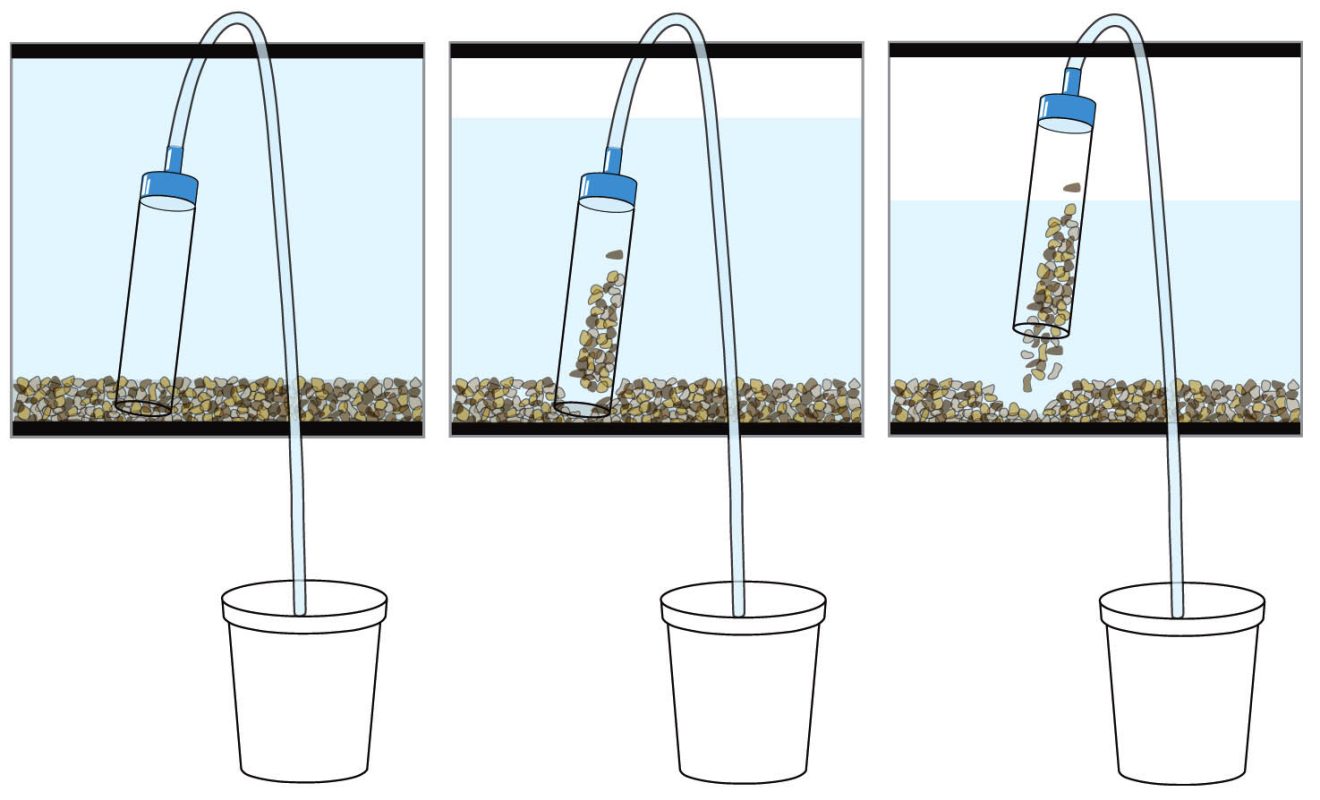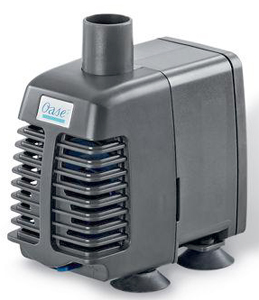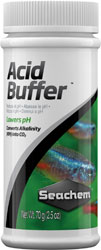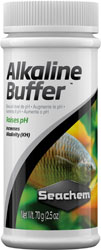13. Freshwater Aquarium Maintenance

Your guide to the perfect monthly maintenance plan for your freshwater aquarium. Lets look at what you need to do to keep your aquarium healthy.

Monthly Maintenance
Long-term success of your tank depends on regular maintenance. Regular freshwater aquarium maintenance, at least on a monthly basis, removes accumulated organic material, nitrate, sludge and fish waste, all of which can cause water chemistry problems, excess algae growth, fish stress, disease and fish death. Water changes and gravel cleaning are the first lines of defense against these problems. Establish a routine for water testing. Testing is a reliable indicator of a healthy tank or one that might need intervention.
Partial Water Changes
Water changes of 10-25%, at least monthly, of the tank volume are mandatory to maintain proper water chemistry. More frequent 10% water changes every two weeks are often even more effective, especially if the tank has had problems.
Step by Step
1) Unplug heaters, pumps, air pumps and any filters.
2) Remove ornaments that need cleaning leaving some as hiding places for the fish.
3) Clean the gravel

Use a gravel cleaner to siphon 25% of the tank water. The gravel cleaner should be pushed down into the gravel, agitating and removing any debris. Clean the gravel in this manner throughout the aquarium and siphon any obvious debris on the gravel surface. Crimp the gravel cleaner hose to slow down the water flow and release the gravel that accumulates in the tube. Keep gravel out of the hose. If you have aquasoil or soil type substrate for planted aquarium see this article.
Water can be drained directly into a sink with a Lee’s Ultimate Gravel Vacuum. The UP Aqua models are great and the Hagen Marina Easy Clean Gravel Vacuums work well in deeper aquariums. Remember, only use buckets saved specifically for your aquarium. White buckets are great for small and medium aquariums. For large tanks, Rubbermaid Roughneck trash cans are great for moving new water to the tank or for storing reverse osmosis water. Aquarium offers a good selection of cleaning supplies more suitable for nano and planted aquariums.
Tip! Rubbermaid buckets are available in sizes from 10-44 gallons and a rolling dolly is available for moving buckets to the tank. Dirty water can be pumped quickly to the drain and new water can be pumped from the bucket to the tank with a 500gph or larger submersible pump. The OASE OptiMax is a perfect pump for water changes. If you want it to go faster use a larger pump. Whatever you do make it easy on yourself and carry and dump as few buckets as possible.

4) Refill the aquarium with clean water the same temperature as the aquarium water.
5) Chlorine kills! Add a high quality water dechlorinator/conditioner to the aquarium as soon as the tank is filled. AquaLife Complete is the best water dechlorinator or conditioner. It will take care of heavy metal and chloramine as well.
6) Add AquaLife Activate to prevent filtration disruption, to remove sludge and keep filters clean.
7) Rinse decorations thoroughly that have been soaking in and redecorate the aquarium (link to solution about bleaching coral or cleaning plants).
Note! Important factors to keep in mind:

pH
If you want to maintain a specific pH of the tank before the water change, adjust the new water to that pH prior to refilling the tank. SeaChem Acid Buffer and Alkaline Buffer are good products to adjust pH. Seachem also makes Malawi/Victoria Buffer which is an excellent freshwater pH product for African cichlid freshwater tanks and Amazon region freshwater tanks.


Chloramines and other things to consider
Municipal water treatment plants in some areas of the country, in order to make water safe for human consumption, add chemicals to the water that can kill your fish. If chloramines are present in your tap or tank water, use AquaLife Complete. It is important to note that different areas of the country have different tap water conditions. Using Reverse Osmosis Filters by Aquarium Life Support Systems is the best way to ensure the highest quality tap water. Then you can use Replenish By Seachem or Aquavitro Mineralize which is even better to make the water exactly the way you need it for whatever type of aquarium you are doing. We recommend the Azoo products Mineral Plus and GH Plus for shrimp tanks. Azoo is one of worlds largest show shrimp breeders.
Toxins
TOXINS DO NOT EVAPORATE! Topping off water due to evaporation does not constitute a water change and does not lower the toxins in the tank. If you add water but don’t remove water, you have not done a water change. Only removing water from the tank reduces accumulated toxins.
Power Filters, Powerheads, and Water Pumps
Periodically remove and clean impellers. Impellers become dirty and begin to turn slower. UP Aqua and Hagen makes special brushes for cleaning impellers and impeller housings. These can be cleaned and soaked in Citriclean by aquaLife. This product also works well on any hard water stained items.
Intakes
Keep intakes and intake strainers free of debris.
Equipment
Light fixtures and filters have specific maintenance requirements which should be performed according to the manufacturers’ instructions.
Filter Media
Disposable filter cartridges (all filter pad-type filters) should be replaced monthly. The carbon in pad-type filters is only active for one month. If filters hold two or more pads or inserts, replace them one week apart. Reusable and or biological filter media (sponge-type) should be rinsed periodically Sponges should be replaced every when they are no longer stable or have the original size or every 3-12 months.

Most chemical media, carbon and ammonia removers, should be replaced monthly. Some higher-end chemical media, like Chemi-Pure and Poly Filters, last up to 3 months.

Air Pumps and Air Stones
Air pumps are easy to maintain. The air filters should be changed whenever they appear dirty or after approximately 2-3 months of use. Diaphragms should be changed if air flow or pressure is reduced. Replacing air stones regularly increases the life of air pumps.
A dirty, encrusted air stone puts excess back pressure on a pump and quickly wears out diaphragms. Air stones should be replaced monthly.
Aquarium Glass
The outsides of aquariums should be cleaned . Many products are available for cleaning the insides of aquarium glass. Use an aquarium-safe cleaner like AquaLife Brite Glass and Acrylic Cleaner. AquaBlade Scrapers and the Deluxe Cleaning Pad. Many household cleaning products contain bacterial growth inhibitors that can kill livestock in the aquarium. Again, use aquarium-safe cleaning supplies only!
Canopies
Glass canopies and tops can be removed and cleaned with AquaLife Brite Glass and Acrylic Cleaner and CitriClean.
Artificial Plants and Other Decorations
Algae covered decorations can be cleaned by soaking them in a solution of bleach at a ratio of 1 cup of bleach to 5 gallons of water. After the decorations are bleached to the desired color, pour out the bleach water and thoroughly rinse the decorations. Soak in fresh water and use a quadruple dose of dechlorinator like Dechlorit by aquaLife. There is no reason to use your AquaLife Complete for this but you can. The decorations should be soaked until all smell of bleach is gone or until the rinse water is free of chlorine. This should be checked with a Sera Chlorine Test Kit.
A word about tap water . . .
Tap water is prepared for human consumption but is not safe for use in aquariums. Chlorine and fluoride are added to tap water for the protection of humans but will kill your fish and wipe out the beneficial bacteria in filters. Water conditioners are inexpensive and neutralize these toxic compounds. Good water conditioners bind metals and enhance the slime coat barrier of fish to help prevent disease. Reverse osmosis or ion exchange water significantly reduces excess algae growth. Reverse Osmosis Filters by Aquarium Life Support Systems units are among the best money can buy. These units produce soft, phosphate-, silicate-, and nitrate-free water. When using reverse osmosis water, remember to use AquaLife Complete to replace essential elements back into the water. Pre treated water can be purchased at better aquariums stores. For small water requirements this is sometimes convenient.
Aquarium keeping is a fun, intellectually stimulating and rewarding hobby that brings the fascination of biology and nature into your home or office. Regular water changes and routine maintenance is the formula for success.
A New Tank
A cycling aquarium should not be gravel cleaned. Obvious overfeeding can be removed from the surface of the gravel but complete water changes will lengthen the cycling time.
If the aquarium is not equipped with multiple filters or high surface area biological filtration, gravel vacuuming (water change) and filter maintenance should not be performed at the same time. This could lead to a larger than acceptable loss of beneficial bacteria necessary to drive the cycle. Aquariums relying on single filters should be gravel cleaned one week and the filters maintained the third week. Always add AquaLife Activate Freshwater after water changes and filter maintenance. If two different filters are used, never clean them both in the same week.

 Freshwater Plant Guide
Freshwater Plant Guide Freshwater Fish Compatibility Chart
Freshwater Fish Compatibility Chart